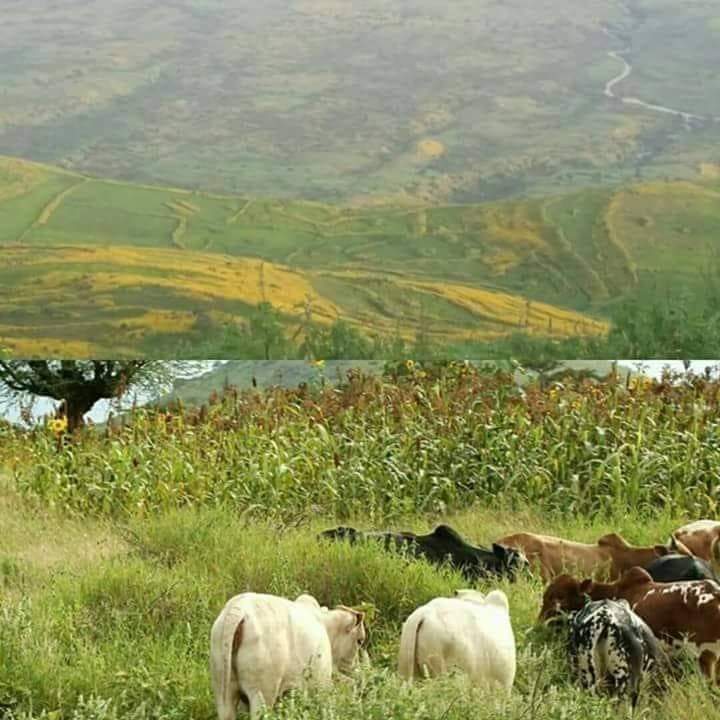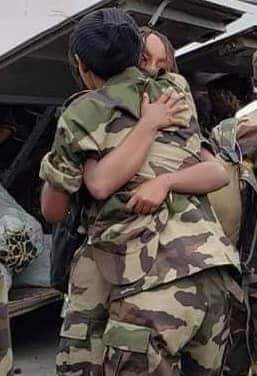On the surface, the point of the article is ok & positive. What the author is forgetting though, while its staring the author right in the face, is that the peace deal was signed already in 2000! So the TPLF has been the stakeholder & with a say, throught all those years. And what is said was:
"No! We don't accept the EEBC ruling!!!"
So what more is there to talk about, besides the fact that as a mere killil, it should tow the line with what the Federal Govt decides on issues of foreign policy & security.
One would think!
ISS Today >
The Eritrea-Ethiopia peace deal is yet to show dividends
Tensions in both countries relating to Ethiopia’s Tigray regional state are hampering progress.
11 SEP 2020
BY SELAM TADESSE DEMISSIE
https://issafrica.org/iss-today/the-eri ... -dividends
It’s been over two years since the much-heralded rapprochement between Eritrea and Ethiopia culminated in a peace and friendship agreement in July 2018. The deal, brewed personally by Ethiopia’s Prime Minister Abiy Ahmed Ali and President Isaias Afwerki of Eritrea, symbolised an end to the 20 years of no war, no peace situation and the start of cordial relations between the two countries.
The settlement was internationally praised for its potential to stabilise the region beyond improving the two countries’ affairs. Abiy even received the 2019 Nobel Peace Prize for his efforts to build bridges with Eritrea.
Two years later, positive steps have been taken in some areas, but not in others due to tensions between Ethiopia’s federal government and Tigray regional state, and unresolved animosity between Tigray and Eritrean leaders.
The dispute over the small border town of Badme, which both Eritrea and Ethiopia claimed as their own, is often cited as the reason for the outbreak of the 1998-2000 border conflict. However the root causes go deeper.
They include historical rivalry, political and economic differences and hegemonic competition between the ruling elites of both countries. These were the Eritrean leadership, and the ruling party in Ethiopia’s Tigray State – the Tigray People’s Liberation Front (TPLF) – Ethiopia’s dominant political party until Abiy came to power.
The Eritrea-Ethiopia Boundary Commission (EEBC), established to resolve the border issue, decided in 2002 that Badme should belong to Eritrea. A failure to implement the EEBC’s decision led to the stand-off between the two countries.
In the 2018 peace deal, the leaders agreed to begin political, economic, social, cultural and security cooperation. They decided to resume diplomatic, transport, trade and communication ties that had been frozen for two decades. The leaders resolved to implement the EEBC decision and jointly ensure regional peace, development and cooperation.
_____________________________________________________
Twenty years after the border war, and despite the peace deal, the main protagonists are still fighting
____________________________________________________
Since then, progress in reconnecting the two countries has been made in key areas. Numerous high-level leadership visits took place, diplomatic relations were normalised and embassies reopened. Daily flights between Addis Ababa and Asmara were established and phone connections resumed. Four border posts were opened, although they were closed after a short period.
Talks about infrastructure and transport linkages, such as Ethiopia’s use of Eritrean ports (including a feasibility study for a railway https://eritreahub.org/ethiopia-plans-r ... th-eritrea between Massawa and Addis Ababa) and rebuilding of roads, dominated discussions. Other symbolic soft power and people-to-people interactions took place. United Nations sanctions on Eritrea were lifted.
The high-profile start of the rapprochement raised expectations, both at home and internationally, that 20 years of tension and mistrust could be eroded. Two years later, this potential has waned, paralysing anticipated socio-economic gains for people in both countries. And the cause is mostly tensions between Ethiopia’s federal and Tigray officials, and ongoing conflict between the TPLF and Eritrean leadership – just like old times.
Ethiopia’s Tigray regional state and Eritrea share the border that was contested. Badme is also under Tigray administration, and so the region’s TPLF leaders share responsibility for implementing the EEBC’s decision. But the peace process was initiated from Addis Ababa, and there wasn’t adequate consultation and consensus building among stakeholders like the TPLF.
____________________________________________________
The peace process failed to adequately consult some stakeholders like the TPLF
____________________________________________________
This exclusion – together with other political differences relating to ideology, foreign policy, governance and elections – have worsened the division between Abiy’s government and the TPLF’s rule in Tigray. One point of contention involves how to engage with Eritrea.
Abiy, in his April 2018 inaugural speech, announced his administration’s unconditional acceptance of the stalled Algiers agreement signed in 2000 and aimed at ending the border war. In February 2020, Debretsion Gebremichael – the TPLF’s highest official – said a structured peace process was needed that included all relevant sides, not just the two national leaders.
Implementation of the 2018 deal cannot occur without buy-in from all relevant government actors in Tigray. Consensus is also needed within the respective agencies of both Ethiopia and Eritrea and all other relevant stakeholders.
The four border posts that were opened and quickly closed symbolise the lack of consensus among federal and state agencies on both sides around regulating movement and trade across national boundaries. Proper consultations would have allowed time to develop harmonised positions and enact new regulations.
____________________________________________________
Implementation of the 2018 deal requires buy-in from all the relevant government actors in Tigray
____________________________________________________
Unresolved hostility between Eritrea’s and the Tigray region’s ruling elites also hampers progress. Isaias accused the TPLF of complicating implementation of the EEBC’s decision, which the TPLF denied. Isaias also claims the TPLF created division among Eritreans, organising ethnic-based opposition and spreading misinformation to spoil relations between Eritreans and Ethiopians. The TPLF in turn accuses Eritrea of interfering https://www.capitalethiopia.com/feature ... y-forward/ in Ethiopia’s internal affairs and threatening regional security.
Twenty years after the bloody border war, and despite the new peace deal, the conflict’s main protagonists – the TPLF and the Eritrean leadership – are still fighting.
Given the increasingly serious confrontation between Mekele and Addis Ababa and the unresolved animosity between Mekele and Asmara, the TPLF feels unfairly targeted from both sides. Without political will and confidence building between the TPLF, Abiy and Isaias, the peace deal may not bear fruit.
Resolution of the conflict between Ethiopia and Eritrea is imperative for advancing economic and development prospects in the Horn. Sustainable peace and the benefits that it will bring can only be achieved if the 2018 agreement is implemented.
The priority is to de-escalate tensions between the Federal Government of Ethiopia and the Tigray region. Consultation and confidence building is equally important between Eritrea and Tigray’s leadership and people. Only then will the new peace deal stand a chance of bringing much-needed stability to the people of both countries and the region.
Selam Tadesse Demissie, Research Officer, Horn of Africa Security Analysis, ISS Addis Ababa.
















